Mammals belonging to the family Ursidae are called bears. These animals are classified as caniforms and have pinnipeds as their closest relatives. Today, there are only eight surviving species of bears in the world, and they are distributed widely across the world. With the exception of Antarctica and Australia, bears occur in all other continents of the world.
Sun Bear
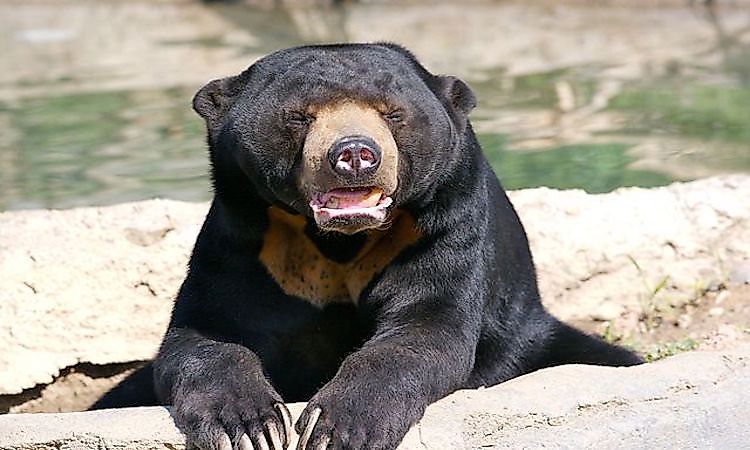
The sun bear (Helarctos malayanus) lives in the tropical forests of Southeast Asia where its range includes the countries of India, Bangladesh, Myanmar, China, and Southeast Asian nations of Malaysia, Thailand, Cambodia, Vietnam, Laos, and also Indonesia. The population of these bears has, however, declined by over 30% despite their wide range. Hence, the species is classified as Vulnerable by the IUCN.
There are two subspecies of the sun bear, the H. m. malayanus and the H. m. euryspilus. The omnivore bears depend greatly on beehives and honey for their food. They also feed on insects like ants and termites, fruits, and shoots of palms, flowers, etc. Sadly, sun bears suffer great distress due to human cruelty and are captured and kept in bear bile farms in China where they are subjected to extreme cruelty. Bear bile is used in preparing traditional Chinese medicines. Sun bears also are killed for other purposes and are captured for the pet trade. Habitat loss also leads to the decline of this species.
Sloth Bear
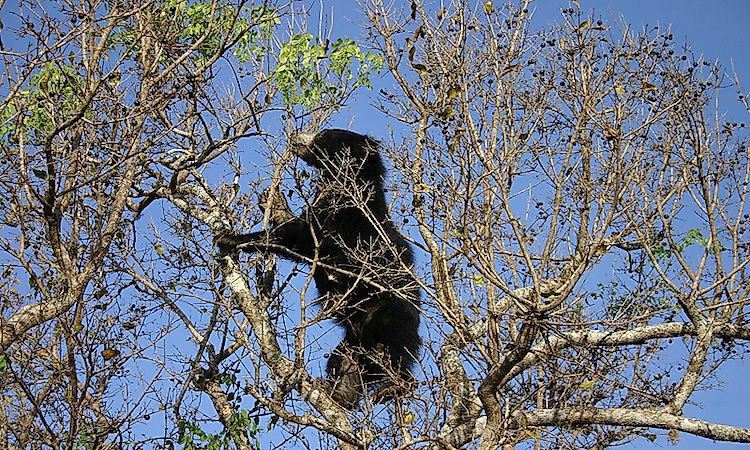
The sloth bear or the labiated bear (Melursus ursinus) is an insectivorous, nocturnal bear that lives in the Indian subcontinent. Sloth bears have lankier builds, shaggy coats, and specially adapted mouthparts for sucking insects. The bears feed on honeybee colonies, fruits, and termites. For years, these bears have been used as performing pets, but the practice has been stopped by law in India. The bears have also been hunted extensively for food, claws, and bacula.
Spectacled Bear
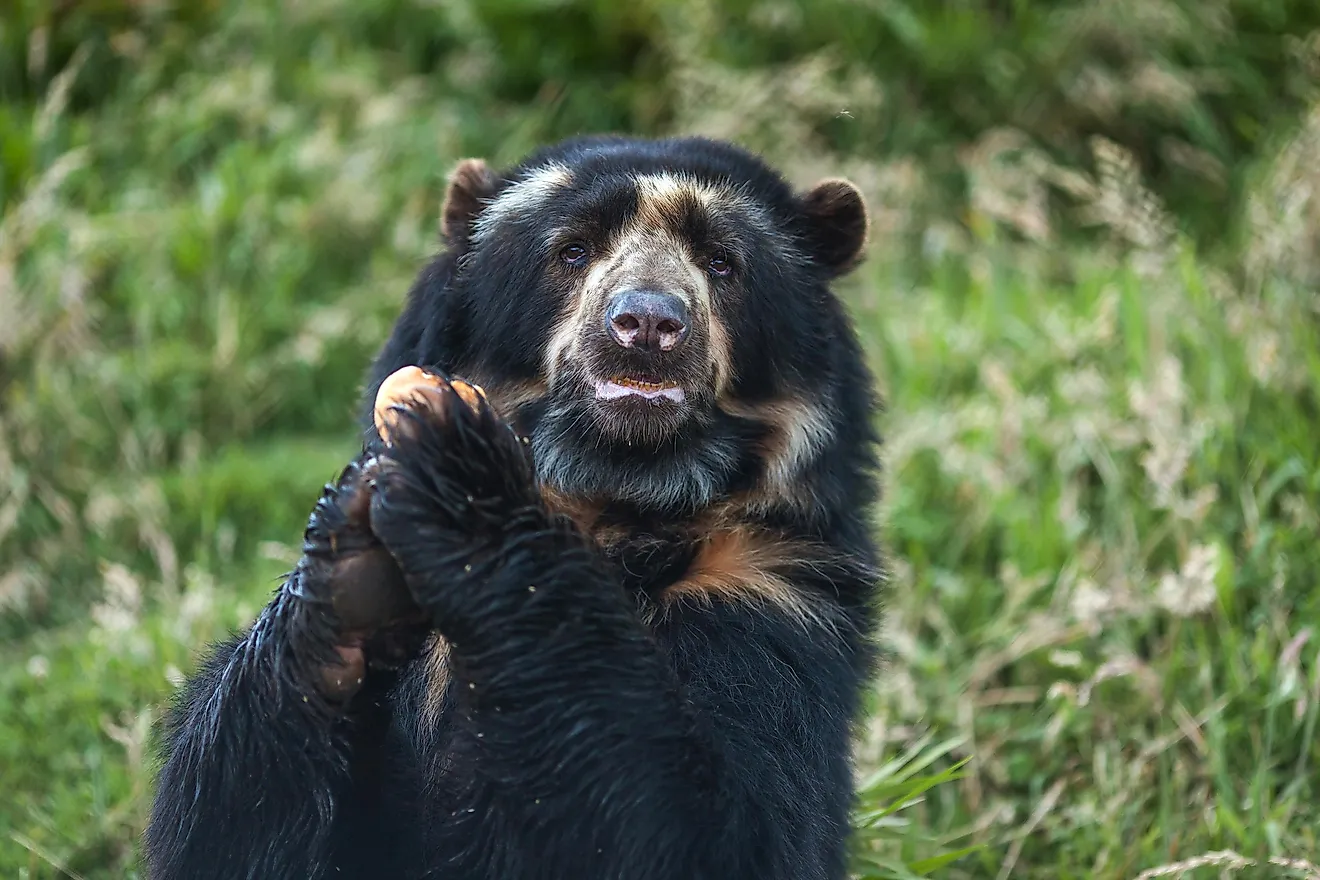
The spectacled bear or the Andean bear (Tremarctos ornatus) is the only extant bear species that is native to South America and the Tremarctinae family’s only surviving member. The spectacled bear is found in the Andes Mountain region in the countries of Colombia, Bolivia, Peru, Ecuador, Venezuela, and Argentina. The bears prefer to inhabit humid montane forests in their range. The spectacled bear is classified as vulnerable since habitat loss has caused a decline in the numbers of these animals. Poaching for trophy hunting, pet trade, natural products trade, human persecution, killings for magical and religious beliefs, etc., also threatens the survival of the spectacled bear.
American Black Bear
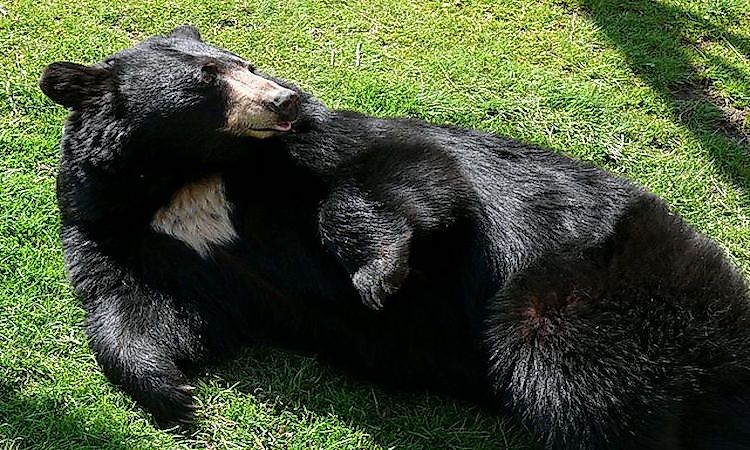
The American black bear (Ursus americanus) is a native North American bear. It is the smallest bear in North America and also the most widely distributed one in the continent. It is also the world’s most common bear. The bears are omnivores with seasonal and geographical variations in diet.
The subspecies of the American black bear include:
Olympic black bear, Eastern black bear, California black bear, Haida Gwaii black bear, Dall black bear, Queen Charlotte black bear, Mexican black bear, Cinnamon bear, Glacier bear, Florida black bear, Newfoundland black bear, Kermode bear, spirit bear, Louisiana black bear, West Mexico black bear, Kenai black bear, and Vancouver Island black bear.
Asian Black Bear

The Asian black bear (Ursus thibetanus), commonly known as the moon bear or the white-chested bear, is a medium-sized bear that lives in the northern parts of the Indian subcontinent, northeastern China, Russian Far East, Korea, Taiwan, and some islands of Japan. Hunting of the bear for its body parts and loss of habitat have resulted in the classification of the bear as vulnerable by the IUCN. Unfortunately, the largely herbivorous Asian black bear can pose a threat to humans who have trapped and killed them for years and hence triggered a hatred for humans in these bears.
The subspecies of the Asian black bear:
Formosan black bear, Baluchistan bear, Indochinese black bear, Japanese black bear, Himalayan black bear, Tibetan black bear, and the Ussuri black bear.
Brown Bear
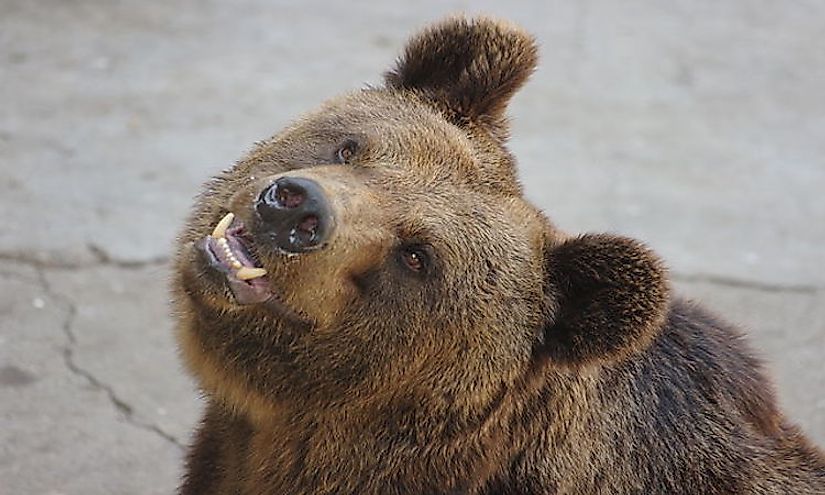
The brown bear (Ursus arctos) is the world’s most widely distributed species of bear that is found throughout large parts of North America and Eurasia. The brown bear and its sister species, the polar bear, are regarded as one of the two biggest terrestrial carnivores living in the world today. Though the population of these bears has greatly reduced from what it used to be at the turn of the 20th century, it is yet to enter the threatened category in the Red List due to its widespread distribution. However, certain subspecies of this bead are in great danger while certain others have already been hunted to extinction.
The various subspecies of the brown bear are:
Eurasian brown bear, Kamchatka brown bear, East Siberian brown bear, Himalayan brown bear, Tibetan blue bear, Ussuri brown bear, Syrian brown bear, Dall Island brown bear, Grizzly bear, Grizzly bear, and the Mexican grizzly bear.
Polar Bear
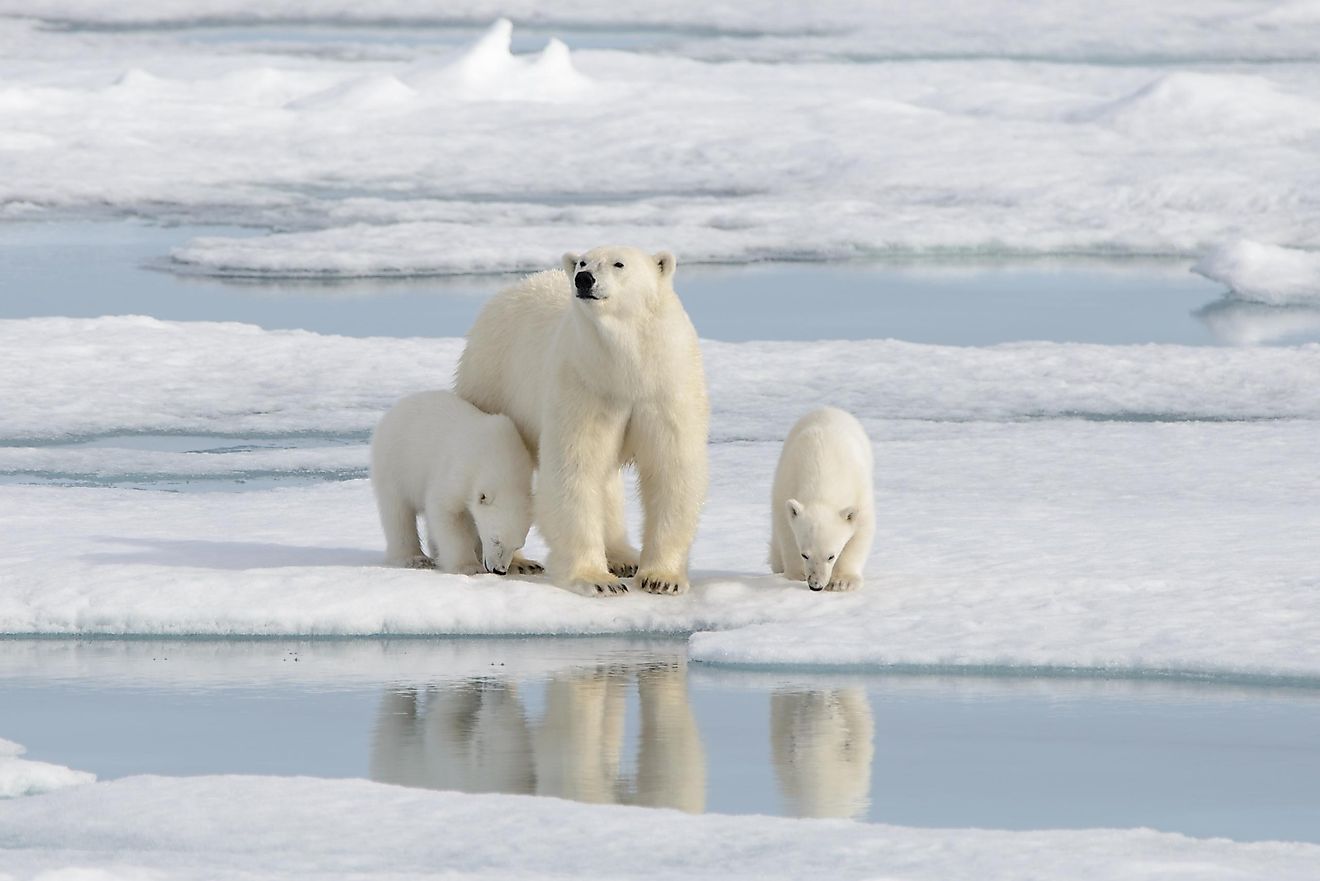
The polar bear (Ursus maritimus) is a carnivore that generally lives within the limits of the Arctic Circle. Though a sister species of the brown bear, the polar bear has evolved to develop many characteristics that help it to survive in the extreme environment where it lives. Seals are the preferred food of these bears. Though most of the bears are born on land, they are excellent swimmers and spend a large part of their life in the frigid waters of their habitat.
Polar bears are today classified as a vulnerable species, and climate change is the biggest enemy to this animal. At least 3 of the 19 subpopulations of the polar bear are in decline. Though large-scale hunting of these bears has been brought under control via numerous regulations, the loss of habitat continues to threaten the survival of this species.
Giant Panda –
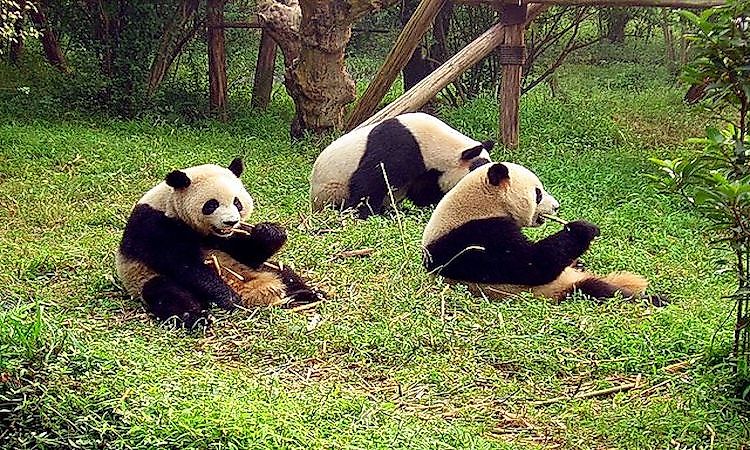
The giant panda (Ailuropoda melanoleuca) is one of the most popular species of bears that is native to south-central China. It is known for its distinctive appearance, black and white color, and distinctive black patches around the eyes, ears, and round body. Over 99% of the giant panda’s diet consists of bamboo. However, the animals are omnivores and might even feed on birds, carrion, and rodents. Large parts of the bear’s habitat have suffered massive degradation due to deforestation, farming, and other developmental activities. Despite conservation efforts being speeded up to save the giant panda, the bear species is classified as vulnerable by the IUCN.


 Users Today : 320
Users Today : 320 Total views : 468747
Total views : 468747